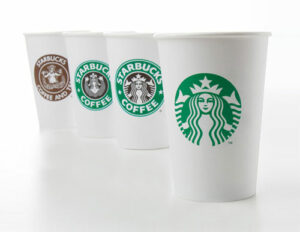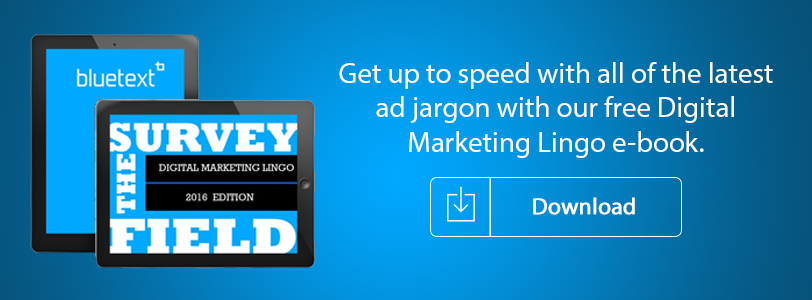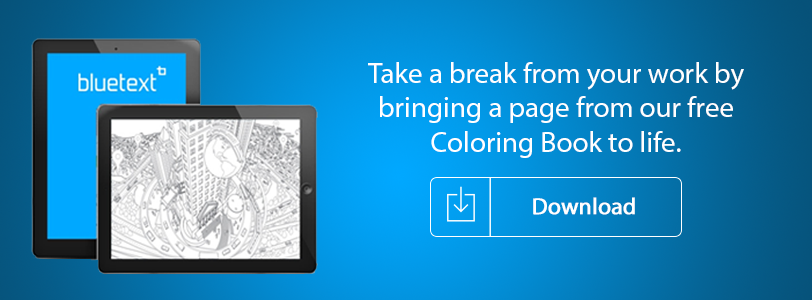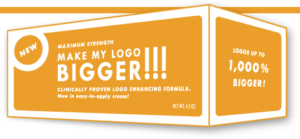Time to Write My Blog…I Wrote My Blog…Time to Write My Blog
Remember the iconic Dunkin Donuts campaign from the early 80s featuring Fred the Baker?
What a classic campaign. 30 years later the lessons we can learn from Fred are relevant and applicable to modern content market.
It is hard….It is time consuming…but it can really pay off when done right. In my estimation a disciplined approach to blogging and content marketing can be a relatively low cost way of tilting the playing field for your products or services.
We have built one of the strongest content marketing practices in D.C. by working with our clients to create aggressive, consistent content marketing campaigns that ensure they have a strong presence across the web with their key audiences. We create quarterly editorial calendars that align with key company and product milestones, as well as industry events where we can help amplify messages. We instill content marketing into the DNA of our clients so that they can experience the benefits of a disciplined approach.
Content marketing, however, is not something you can just set and forget. It takes care and nurturing. It takes discipline and an entire team effort. And it takes some creativity.
So the next time someone says they don’t have time to write a blog or are too busy, tell them to give me a call. We can share war stories and I can show them significant results. I think it will make them think twice and find that extra 30 minutes each week.
One of the most popular video series anywhere right now is comedian Jerry Seinfeld’s “Comedians In Cars Getting Coffee,” where Jerry takes other comedians out for rides in classic cars, and then they get coffee. It sounds simple, but it’s very funny, and very well-done. But what’s unique about the series is how it is designed: The videos are made first and foremost to be seen on mobile devices, not on television sets or even desktops or laptops. These aren’t just “mobile-friendly,” they were shot on video for the very small screen.
Once you know that, you can watch and see how that is done. All of the shots are tight on Jerry and his guests. Images of people and cars fill up the screen. Colors are rich and saturated, coffee cups are shown in close up, even the froth of the cappuccino is given over to the screen. There is no small type to get lost or details that can’t be seen on a small device. And while they still look good on larger screens, this is a mobile-first design in its purest form.
What does “Comedians in Cars” tell us marketers about video campaigns?
Number one, it’s a clear sign that consumers are comfortable ingesting rich content in its most compact form—on the small screen of a mobile device. If Jerry Seinfeld is creating for the smallest of video sizes, then that is where the audience is moving. And if marketing is going to reach this audience, it needs to create content that works well in that format.
Number two, creating a mobile-friendly video cannot be an after-thought. Every aspect of the design of the video, from concept and storyboard to shooting and post-production, must contemplate the mobile device as the primary focus. Not only must all of the key images be seen in tight focus, but any calls-to-action must be large and easy to read. Text must be minimal and clear. Subtlety is not your friend. Actions must be obvious and dialog crisp.
Number three, and assuming the video will be hosted on your company website, the video player must be capable of managing a responsive video, and your video size must be device agnostic. Your video content should be visible on an iPhone, a larger mobile device and a large monitor.
Number four, choose a bold image for your splash screen while the video is loading. It will draw viewers in and it’s good for search as it will make your video easily recognizable. Here’s an example of a bold splash screen image:
Finally, think carefully about your Call to Action. CTAs in videos on a mobile device may not be clickable. If you are unable to create a clickable CTA, consider a CTA that’s external to the video but still on the landing page.
As consumers rely on their mobile devices for gathering the information they need to make purchasing decisions, a video that is truly mobile first can move you ahead of the competition.
A few months ago my partner Don Goldberg got a Google Cardboard viewer and was showing it off around the office but was not getting much of a rise out of the team. Maybe we all thought Virtual Reality was too far out there and the hype of Oculus Rift was overblown. Fast forward to early November and I got a Google Cardboard viewer packaged with my Sunday New York Times at home (yes, we still get the Sunday Times!). I downloaded the app and was immediately transformed. Being in the visual storytelling business, I knew that a seismic shift was beginning. Video was no longer just video. VR transformed the story, brought the user (me) into the story, and created an experience that everyone in my family was amazed by. With the price point of the Cardboard viewers it would not create a barrier for marketers to reach their audiences, even in the b2b world.
To quote Google’s news release from October: “Google Cardboard is bringing virtual reality worldwide. Starting today, the Google Cardboard app is available in 39 languages and over 100 countries on both Android and iOS devices. Additionally, the Cardboard developer docs are now published in 10 languages to help developers build great VR experiences. With more than 15 million installs of Cardboard apps from Google Play, we’re excited to bring VR to even more people around the world.”
The conversations inside our agency quickly moved to figuring out how to make VR a reality for our clients. Virtual reality could be the next medium for us to do creative storytelling. As a company focused on visual storytelling married with advanced development (see our work for brands like Workday, Adobe, and Jones Lang LaSalle), it was the perfect storm.
Fast forward two months and today we are designing a digital briefing center in Virtual Reality. We are marrying up our creativity, advanced video capabilities, and cutting-edge app development to help an enterprise software company more effectively tell its story. We see virtual reality as more than games and entertainment. We see it as a platform to tell stories in a fun and engaging way.
From what I can tell there are very few agencies doing virtual reality. We are diving in headfirst. With the launch of Google Cardboard we have an opportunity to help our clients tell their story like never before. That is the business we are in and that is what sets us apart.
At Bluetext we do a lot of branding and website design. It is a service area where we have achieved a lot of success for clients across many industries, effectively helping them leverage their brand and visual identity to more easily achieve their business goals through their digital platform.
For many of our clients branding and website go hand in hand. We either create a new logo and visual identity from scratch, or evolve a brand identity to update a design system that needs some love, and then design and launch a sophisticated website to bring the brand to life.
You never really know where this process will go until you immerse yourself in the client’s business, getting to know their leadership, sales teams, customers, partners, and other stakeholders that can add valuable perspective.
Over the last several months across a few major client initiatives some unique perspectives emerged that made me step back to think about some tenets of branding that continue to arise as best practices we preach.
1. Bigger is not always better. There is this false perception that the best way to represent the strength and boldness of a brand is to make the logo as big as possible on a website. This is simply not true. Rarely is the fix to a brand question to make the logo bigger. There is a trend toward simpler, smaller branding whereby companies let their logo breath. Beyond the fact that we are moving to a world with smaller screens and a reliance on mobile devices where icons need to stand on their own, bigger logos make it look like you are trying too hard and in fact make your business look smaller.
2. Stand Alone. If possible, a brand mark/icon should stand on its own. I was meeting with the CEO of a major corporate client recently as we were working through a very fast moving branding process. He looked at the simplicity of the Bluetext “BT” icon and said that he really wanted us to replicate that for his brand. While flattering, it is not always that easy. Corporate names can be clunky, but necessary. The Nike swoosh was not globally recognized when it was launched in 1971. So the best advice I can give here is to create a strategic plan for how long it may take for you to feel comfortable enough with brand recognition around your mark whereby people would recognize it without your company name attached to it. Creating an “iconic” brand does not happen overnight, but with careful planning and a commitment to success it is possible.

3. Be Simple. We are all visual storytellers, so if your brand mark can tell a simple story that is the ultimate success. The old adage a picture is worth 1,000 words is truer than ever. Look at how people consume content. Create a brand that simply explains who you are or what you do, or at a minimum provides a platform to easily explain your corporate story.
To learn more about the importance of a strong brand, read our latest blog post:
Earlier this year we began working with the developer of a product called NetWatcher which is designed to provide SMBs the same level of IT security as usually afforded only by large enterprises.
Last week we launched the company at the MSP World Conference in Las Vegas where our team was onsite to support the company with a great booth where we were able to demo the product to over 100 Managed Service Providers who can leverage NetWatcher to drive new revenue streams with their customers.
In advance of the company we launched a new website designed to help customers and MSPs understand the benefits of the solution to their organizations.
During the awards portion of the conference, NetWatcher was honored with the “Best in Show” award for its innovative and promising solution designed specifically to address the security needs of small and medium-size businesses (SMBs). NetWatcher works to immediately alert SMBs when customer or employee data is at risk. For example, weak passwords, unsecure assets, unsafe employee behavior, and outdated software are all things that require continuous monitoring to defend against cyber-attacks.
Despite the constant threat of attack towards SMBs, many companies still lack sufficient protection to thwart off cyber criminals. Check out the top five vulnerabilities that are often overlooked by SMBs.
Congrats to our client Scott Suhy and the entire NetWatcher team. Keep an eye out for much more to come in the coming months from this promising company that is addressing a major need in the market which is currently underserved.
To learn more about how Bluetext can help you be best in show, too, click here:
“If a tree falls in a forest and no one is around to hear it, does it make a sound?” The age old philosophical question that actually has a lot of applicability to modern marketing. The truth is that the best marketing campaign with the perfect message will fall flat if there is not an audience of people to see it. data mining At Bluetext, our go to market can be divided into three areas that must work in concert to be successful:
- Brand Strategy, which focuses on creating the right message and brand positioning;
- Brand Presentation, which focuses on taking that message and making it visual; and
- Brand Delivery, which focuses on taking that strongly designed visual message and delivering it out into the market via multiple channels.
The dirty little secret is that so many companies focus on their strategy and their presentation but then fail to really attack the proper channels for the delivery of their message. So here are four things you should be asking yourselves or your marketing agency to ensure that your message is delivered to the right audiences in order to properly achieve your goals:
- Do you have a database and are you leveraging it? There are many modern techniques for properly leveraging your corporate database to drive awareness and interest in your products or services beyond sending out HTML email blasts. Just this week Google announced a new product called Customer Match that will let advertisers upload lists of emails and match them to signed-in Google users on Gmail, Search and YouTube. This same functionality is available inside of Facebook for very specific targeting.
- What conversations are you a part of or could you be a part of? What assets (people) do you have that we could insert into conversations to better position your company as thought leaders to drive thought provoking agendas? Have you created an editorial calendar that you review each week and track against KPIs?
- Are you putting any budget to paid media? If you are looking to drive leads as opposed to straight awareness then taking a portion of the budget and putting it toward paid channels (for sponsored content, advertorial, infographics, etc.) is critical for success. Think about going programmatic as well to maximize every dollar. My partner Rick Silipigni wrote a blog post about this approach recently – check it out here – https://bluetext.com/planning-a-digital-media-buy-get-with-the-programmatic/
- Are you thinking outside the box? Every company has a handful of activities that they take on from a marketing standpoint every quarter, but only the most successful companies carve out budget to launch innovative campaigns to drive differentiation in the market. Every quarter you should be asking your team and your agency for ideas that would be considered innovative and outside the box. Check out this amazing pop up book my team just created for Workday to help them tell their story in a unique way…http://www.workday.com/payroll_evolution.php
Programmatic buying for display ad inventory hit an inflection point this year and is expected to account for 70% of total display expenditure in 2016. This major shift is being driven primarily by digital agencies like Bluetext who are leveraging rapid advances in advertising technology systems such as Demand Side Platforms (DSPs) that automate the buying process with real-time bidding (RTB) – the backbone of programmatic buying. Programmatic media buying allows agencies to manage and purchase inventory from multiple ad networks through the single interface of the DSP – allowing advertisers to buy a select set of algorithmically filtered impressions across a range of publisher sites simultaneously – all targeted at a specific user persona.
With RTB, a media buyer can create a set parameters such as bid price and network reach, and can combine those with demographics and attitudinal data and auto adjust dozens of performance based variables in real time to determine the right campaign settings to achieve the desired ROI.
So what are primary advantages that programmatic media buying provides to marketers?
- Speed
The automated buying process allows marketers to place ads through the DSP enabling quicker turnaround and increased speed to market, both of which become more critical as planning cycles get shorter, and more stringent performance goals call for dynamic testing and optimization of new strategies that can be obtained via RTB.
- Targeting
Programmatic buying in its purist sense isn’t media buying – its audience buying. DSPs allow marketers to target a specific segment of users, wherever they are – and with retargeting capabilities built in – wherever they’re going based on previous interest in a specific product or service.
- ROI
Increased ROI is achieved by the buying efficiency that programmatic platforms afford marketers – from both a time and cost perspective – as well as the ability to target and optimize in real time. The ability to gain traction in the market at an increasingly rapid rate with new technology also allows marketers to test various strategies simultaneously and shift budgets to the best performing channels
As advertising technology advances, approaches to programmatic buying are sure to become more sophisticated. With the addition of RTB to social networks – and even more traditional channels like print, tv and radio as some predict – new strategies will present themselves that weren’t previously possible. At Bluetext – 100% of our online display buying is programmatic – so I recommend taking a peek over your agency’s shoulder to make sure they are buying smarter and giving your brand the best opportunity to win in today’s highly charged competitive environment.
Last week some very interesting data came out of Parse.ly, an analytics firm which collects data for 400 digital publishers including Conde Nast, Reuters, Mashable, and The Atlantic. The headline is that, as of June 2015, Facebook is driving more traffic to websites than Google’s sites including google.com and Google News.
HUH you ask? How is that possible? Google is the king of referral traffic, right? It is all about search engine optimization.
Not so fast. The data points to some recent shifts in how Facebook focuses on driving content to its site, and validates the fact that this is not some random stat that will course correct. The trend line has actually been going this way since 2012.
So as a marketer, what are you to do? Well, don’t ring the alarm bells too quickly. Search engine optimization is still critical for success and needs to be a big part of your marketing mix. But don’t ignore Facebook and write it off as a nice place for consumers to share pictures with friends. That is an uneducated and naïve viewpoint and one that is clearly not valid based on these numbers.
I think it is safe to say that Facebook is just getting started, and optimizing your content to play off the Facebook algorithms, as much as that is possible, is a very smart approach. Some of the concepts that we continuously share with clients include:
- Make your Content snackable and consumable
- Encourage social sharing
- Create conversation and dialogue
- Be unique, relevant, or different, but never be boring
How is your organization optimizing social content? Are you seeing an uptick in conversations due to your efforts or are you just scratching the surface?
Since my last post was on “Mobile First” I thought it might make sense to opine on mobile marketing…specifically mobile apps where Bluetext has waded deep into the water this summer.
While we are all waiting for mobile browsing to overtake desktop – mobile apps screamed past PC websites in terms of Internet usage. As this trend is bound to continue in 2016, marketing strategies should evolve to keep up.
Approximately two-thirds of the world’s population are mobile phone users, with the total number of mobile subscriptions globally approaching 8 billion. The mobile market is continuing to explode with no signs that it is going to slow down anytime soon.
These broad advances in technology and interaction create the need for new tactics and strategies that will keep brands strong and customers loyal. Users spent almost 25% more time in apps last year than they did the year before, and 2016 is more than likely to see an equal, if not more precipitous increase.
As new mobile apps continue to flood the market, the way that users engage with them is going to continue to change. And as app makers respond to these changes, app marketers will need to analyze and predict trends to keep their brands one step ahead of the game.
Mainstream marketers put more value on organic versus acquired users, however from an engagement standpoint, paid search and ad networks are by far the two of the most effective channels by which users are brought to apps. And while both are of equal value once they’re using the app, our analytics show that users who find an app through an ad network are more likely to return to download and use the app than organic users. This would certainly suggest a sea change is coming in how brands will approach mobile marketing.
As this change is taking place, user retention will remain a top priority for app developers. Users already inside the app will come back to it again and again and, in turn, become more inclined to make an increasing number of in-app purchases.
In this scenario, app loyalty is the ultimate goal. In order to better engage users, apps will have to start using more sophisticated methods to foster loyalty and that’s where the advertisers come in. The rapid increase in in-app purchases will result in a race to produce more ads, both externally and within apps, to engage the growing user base once they are committed to the app.
As apps are becoming an increasingly more important aspect of daily life, developers are becoming smarter and more creative, encouraging users to embrace technology in every aspect of their lives and attracting advertisers like yourselves to reward them for it.
For several companies, the new HTML5 and video based immersive executive experiences Bluetext has been creating are delivering amazing results. For example CSC (Fortune #175) is seeing this experience as #1 out of 12,000 website pages in its domain. These digital experiences represent our clients’ commitment to leading-edge user experiences for thought leadership, sustainable technology, and delivering deep, rich contents to address the requirements of their diverse personas.
“Our new Immersive Executive Experience offers an incredibly powerful demonstration of 3D, with unmatched visual quality and fidelity,” comments Ray Holloman, Director of Marketing and Digital at 1,300 employee firm NJVC. “The new web design and digital experience is integral for immersing our customers in understanding our Mission Critical IT capabilities.”
NJVC was looking for a new powerful message to the market as well as an immersive experience. The video snippets of this experience below provide a good sense of how we are merging marketing campaigns with thought leadership content marketing.
Bluetext, a top digital agency in Washington DC, has produced these user experiences for CSC, McAfee, Intel Security, Deltek, TalkShop, Cooper Thomas, GovPlace, Futures Industry Association, VMWare, and NJVC and would love to explore producing one for you.




